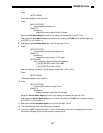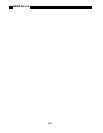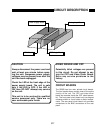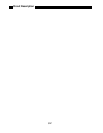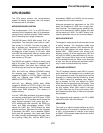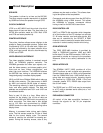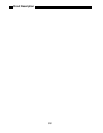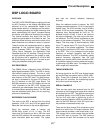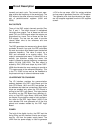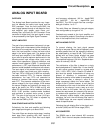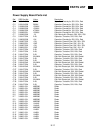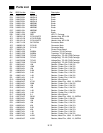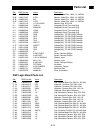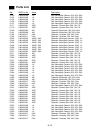
9-7
Circuit Description
OVERVIEW
The DSP LOGIC BOARD takes a digital input from
the A/D Converter on the Analog Input Board and
performs all of the computations related to the
measurement before it is displayed on the screen.
This includes generating the digital reference sine
wave, demodulating the signal, low-pass filtering
the results, and offset and expanding the outputs.
The internal oscillator sine output and Aux D/A
outputs are generated on this board as well. The
reference phase lock loop controls the clock of this
board whenever the reference mode is external.
These functions are implemented within a system
comprised of five functional blocks: the Digital
Signal Processor (DSP), the DAC Outputs, the
Timing Signal Generator, the Reference Clock
Generator and the I/O Interface. Through the use
of highly efficient algorithms, the system is capa-
ble of real-time lock-in operation to 100 kHz with
24 dB/oct filtering on both X and Y as well as pro-
viding a synthesized analog sine output.
DSP PROCESSOR
The SR850 utilizes a Motorola 24-bit DSP56001
digital signal processor (U501). The DSP is config-
ured without external memory. The lock-in algo-
rithms run entirely within the internal program and
data memory of the DSP itself. The Host proces-
sor bus is connected to the main CPU Board via
the I/O Interface on the DSP Logic Board. The
80C186 processor on the CPU Board acts as the
"host" processor to the DSP. DSP firmware and
commands are downloaded from the CPU Board
to invoke different operating modes. The DSP also
has two dedicated serial ports: one for receiving,
and one for transmitting.
REFERENCE CLOCK SOURCE
The clock to the DSP is derived from the timing
generator. U120, U121 and U122 are gates which
select the clock source for the entire digital board.
When the reference mode is internal, the
30.208 MHz crystal (U111) is used. The A/D
inputs and D/A outputs run with a 256 kHz cycle
and the DSP performs 59 instructions each cycle
(each instruction takes two clocks). The crystal
also sets the internal reference frequency
accuracy.
When the reference mode is external, the VCO
(voltage controlled oscillator, U110) is used as the
system clock. The VCO nominally runs at 30 MHz
as well. U105 is a phase comparator. The external
reference input, discriminated by U103 (or TTL
buffered through U104D) is one of the inputs to
the phase comparator. The other input is the inter-
nal reference. The DSP always synthesizes a sine
wave at the reference frequency. This is the Sine
Output. This sine output is discriminated by U209
into a TTL square wave (TTL Sync Out) and is the
other input to the phase comparator. The phase
lock loop then controls the VCO which is the clock
to the DSP. This in turn changes the sine output
frequency to maintain frequency lock with the
external reference. The DSP is constantly getting
external frequency information from the host
(based upon counter U622) which allows the DSP
to synthesize nearly the correct reference frequen-
cy assuming a 30 MHz clock. This keeps the VCO
within range at all frequencies.
TIMING GENERATOR
All timing signals for the DSP and Analog boards
are derived from the system clock by PALs (U601-
604). These PALs generate the clocks for the
DACs and A/D converter, the multiplexing signals
for the Aux inputs and outputs, etc.
SERIAL CHANNELS
There are two serial data streams from the A/D
converter on the Analog Input board which need to
be received by the DSP. The digitized input signal
is received directly via the DSP's serial input port.
The Aux A/D input data is shifted into a pair of
serial-to-parallel registers (U502 and U503) and is
read via the DSP data bus. Each A/D input chan-
nel provides a new sample every 4 µs.
There are two dual-channel D/A converters on this
board for a total of four D/A output channels. Each
output channel provides a new output every 4 µs.
This means that 4 output values must be written
by the DSP each 4 µs cycle. The DSP writes to
one channel of each D/A converter via its serial
DSP LOGIC BOARD



